Race
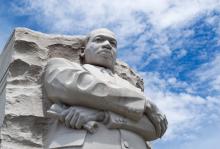
On the Friday morning before Martin Luther King Day this year I met nine twentysomething Sojourners interns at the Martin Luther King Jr. Memorial on the National Mall. We collected into a circle, and I told them: “This is sacred ground.” I explained that we would enter the grounds in silence. I instructed the mostly white group to spend 15 minutes examining the memorial — observe — see what they see. Then we would come back together and share what we saw.
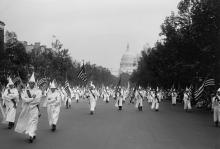
The only answer to the racial divide among Christians — evangelicals in particular — is to go much deeper into what racial equity and healing will require. America’s Original Sin was written for such a time as this. It is a book written to and for white Christians and white churches — to help lead them to new conversations with black and brown Christians and their churches. It could be that studying racism in congregation after congregation, and especially between congregations across racial lines, could be a fundamental building block for genuine racial reconciliation in America.

America rests on a foundation of sin. Its body is strong but its soul is dead. Yes, America provides so much freedom and benefits so many lives. But woe to us if we look at this country’s glass as half full when so many of our fellow citizens barely have water at all. Woe to us if we praise the calm in our lives while failing to give the distress of others’ lives the full attention it needs.
Any speech about America that fails to look at this nation’s current state with the realism and gravity it deserves is speech about a country that doesn’t exist. The America that President Obama spoke of, in his farewell address, is an America I barely recognize.
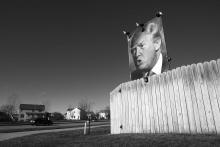
Now that the election is resolved, both the media and politicians have moved to “normalize” the president-elect, even if his personality and practices are far from normal. Let’s call this the great Washington “suck up” to power which goes far beyond the peaceful transition of power, which is an invaluable American democratic tradition.
But this is not normal. None of this is normal.

The high school I went to, on Long Island, taught me a lot about race. I learned about overt racism, and what we now call microaggressions.
Over a quarter of a century later, I am under no delusions that we live in a post-racial society.
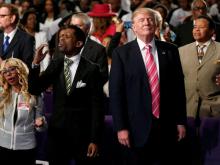
I fear now, as I have feared for months, the impact of his presidency on vulnerable people — including the white and working-class voters in places like my home state of Ohio who lent him their support.
Christians always have disagreements about policy proposals or party platforms during election seasons. But this year, I wonder how white Christians who read the same Scriptures and hold many of the same beliefs that I do could support a man who in word and deed has flaunted the core teachings of our faith.

The project which Allen spoke of, titled Freeze Frame…Stop the Madness, is a work of theatre written, choreographed, and directed by Allen that combines cinema, dance, and music into a stage performance inspired by the issues of race and gun violence in America. Freeze Frame opened at the Kennedy Center for the Performing Arts in Washington, D.C. on Oct. 27 and, on Oct. 24, Allen visited the Center for American Progress, in the nation’s capital, to discuss Freeze Frame’s creation and the impact she hopes the show will have on the U.S.
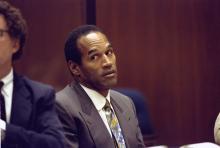
IN THE FIRST half of 2016, O.J. Simpson, who still resides in a Nevada prison for his bungled robbery of sports memorabilia, seemed to be everywhere. First, there was the FX series “The People vs. O.J. Simpson: American Crime Story,” a high-quality, behind-the-scenes dramatization of Simpson’s 1995 murder trial. Then came “O.J.: Made in America,” a seven-and-a-half hour epic ESPN documentary in which director Ezra Edelman finally gives the Simpson story its due as a landmark event in the history of U.S. attitudes toward race, celebrity, and domestic violence, and in the evolution of our mass media culture.
Among other things, the O.J. Simpson murder trial marked the end of an era in which professional journalists observed events, then summarized and framed them into a coherent narrative for public consumption. This legacy of the print age persisted well into the broadcast era. Until the late 20th century, live, real-time TV coverage was limited to things like sporting events, inaugurations, and moonshots, or national disasters. Otherwise, the world was presented to TV viewers in one neat, 30-minute daily package at 6 p.m.
Like everything else in American culture, this started to change as cable replaced over-the-air broadcasting and specialty channels proliferated. In 1979, C-SPAN started running gavel-to-gavel coverage of the generally somnolent proceedings of the U.S. Congress. But CNN came along the next year to make things such as a toddler falling down a well in Texas into a national melodrama. True, CNN also went wall-to-wall on things such as the Iran-Contra investigations and the first Iraq war, but in the months between legitimate big events it also whipped up essentially local stories, such as child disappearances or shark attacks, into manufactured national crises.
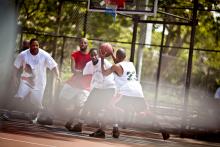
IN 2000, sophomore Onaje X.O. Woodbine was Yale basketball’s leading scorer and one of the top 10 players in the Ivy League. From the outside it must have seemed like a dream come true for a young man who grew up playing street ball in the Roxbury neighborhood of Boston.
But Woodbine felt isolated and excluded by the white players on the team, troubled by what he’s described as “a locker-room culture that encouraged misogyny,” and hungry to focus on his studies and wrestle with deeper philosophical and theological questions. So he quit basketball.
Woodbine eventually returned to the courts of his youth as a researcher, studying the practice and culture of street basketball for his doctoral studies in religion at Boston University. Woodbine is the author of Black Gods of the Asphalt: Religion, Hip-Hop, and Street Basketball (Columbia University Press) and a teacher of philosophy and religious studies at Phillips Academy in Andover, Mass. He spoke with Sojourners senior associate editor Julie Polter in May.
Julie Polter: What led you to study street basketball from a religion scholarship angle?
Onaje X.O. Woodbine: When I was 12 years old, I lost my coach. He was my father figure; I didn’t have my father for most of my early childhood. It was just devastating.
I went to the court the next day to look for him. I felt his presence in that space. It was really the only place, looking back, where I felt safe, I felt whole, where I felt like my inner life was valuable, where there was a whole community whose interest was in my growth as a human being.
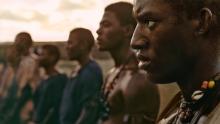
THE NATION'S FIRST blockbuster television miniseries, Roots, shocked the nation when it started airing on Jan. 23, 1977. Based on Alex Haley’s research on his own family’s story and adapted for television from Haley’s novel, Roots offered the world its first cinematic depiction of Africa and Africans unfiltered through the conduit of Hollywood’s racialized imagination. White Tarzan and Jane were nowhere to be found in Juffure, Gambia. Kunta Kinte was the leading man. Fanta was his ingénue—black ... and beautiful.
For eight nights the Kinte family unfolded from generation to generation, focused on individual family members’ struggles against generations of evil white slave masters.
But the 2016 “reimagined” version of Roots places the snatched descendants of Omoro and Binta Kinte squarely within the unyielding machine of the international slave trade—an economic system that, fundamentally, sought the well-being of European nations at the expense of the rest of the world.
In 380 B.C.E., Plato articulated a grand idea in his treatise The Republic. There is this thing called “race,” he posited. Race is determined by the kind of metal a person is made of, he said: silver, gold, iron, or copper. A person’s race determines how that person serves society.
The transatlantic slave trade took Plato’s notion and expanded the “republic” to encompass the world. Guided by Western philosophers’ notions of human hierarchy, Western popes and monarchs declared the right of Europeans to enslave “uncivilized” peoples for the benefit of the crown. It didn’t take long for Plato’s copper and gold to morph into Virginia judicial law that delineated between slaves and servants based on skin color. Colonial “races” became white, black, and red.

"The race-conscious admissions program in use at the time of petitioner’s application is lawful under the Equal Protection Clause," said the court.

What if these were not our foundations? What if these foundations did not lay the groundwork for philosophical and legal frameworks that created separate and unequal schooling for the next 150 years? What if they did not lay the foundations for racialized de-facto exclusions from the Homestead Act and the G.I. Bill. And what if they did not lay the foundations for environmental and climate injustice that causes heightened hardship in communities with less healthcare and fewer resources. And what if they did not lay the foundations for 1.5 million black men to go missing from black communities, families, churches, and civic structures — prized booty of America’s racialized Drug War and a new source of near free labor for American corporations within state and federal prisons.

The most important political fact in America is that, in just a few decades, we will no longer be a white majority nation but a majority of minorities. The milestone historical realities of that fundamental demographic shift are underneath everything else in American politics. Race is an intersectional issue in our political discourse today.
As Christians, our response to the changing demographics of America should be two-fold: a renewal of our baptism and a renewal of democracy.

Christian communities get romanticized as places populated with ideal human beings who reflect a pursuit of individual morality in a community of righteous individuals. Yet, in a society organized by race, ideal humanity is always white. Race has calibrated dominant streams of Christianity according to the goals of white supremacy rather than allowing the gospel to calibrate human social interaction toward justice. Christianity scrubbed of justice turned Jesus into a white man, and the gospel into a message of individual morality, calibrated to the language of virtue derived from Jesus as a fetish of idealized white masculinity.
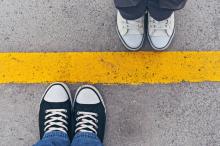
The idea that you're "the other" means that you often are treated differently, often treated as less deserving, or less worthy of respect and protection — both from your surrounding community and often from the law. I've seen the "othering" of not only Asian Americans but also of Latinos, African Americans, Native Americans, Muslims, and countless others. The political construct of race, and — in an international context “othering” — serves and protects those attributed in-group status. It allows the in-group to keep those deemed “outsiders” at a safe distance to lessen the threat presented by their presence — threat to internal value, threat to safety, and threat to resource access.

FOR IMMEDIATE RELEASE
Contact: Michael Mershon, Director of Advocacy and Communications
Phone: 202-745-4654
Email: mmershon@sojo.net

THE GREAT POLITICAL and historical reality behind the incendiary rhetoric and conflict we have been experiencing in our country is this: In just a few decades, America will no longer be a white-majority nation; we will instead be a majority of minorities.
Some of our citizens, especially many older white Americans, are deeply fearful and resentful about the potential loss of white supremacy and privilege. They will not let this happen without a fight. Already there is a clear strategy to try to ensure that the changing demographic does not change America. There is a five-part strategy in place to delay, obstruct, and veto the new America.
First, gerrymander congressional districts. Second, shift the goal of immigration reform away from full citizenship, preventing the enfranchisement of 11 million new voters. Third, incarcerate mass numbers of citizens, leading to their political disenfranchisement. Fourth, put in place new voting regulations that make it harder for many people to vote. Fifth, elect a strong-man candidate who promises to do to “whatever it takes” to ensure that America does not change.
GLOBALLY, those who are on the “wrong” side of the categories, the most marginalized, find themselves most vulnerable to the devastating impacts of climate change, war, displacement, and poverty. As conflict rages in the most fragile countries, millions of people, many of them women and children, are displaced from their homes. The global response has been unacceptable. In Europe and the United States, politicians have stoked xenophobic and Islamophobic sentiments to block refugees seeking asylum. Walls are being built to keep the “others” out. Aid and relief to these areas are being cut in favor of expanding military budgets. Race sits at the intersection of all of these issues.

Black Americans’ educational equality has improved in the last year, but college graduation rates and access to high-quality elementary and secondary education remains a problem, according to a major survey by the National Urban League — which wants Congress to ramp up early childhood education and provide more federal aid to black college students.

I have been thinking about what it means for me to try to put myself into the shoes of other people, too. When I see someone who is different from me — a transgender person, a Muslim person, a politically conservative person, an 'any kind of different' person — I am tempted to look at that person through a hermeneutic of fear. I either fight against that person or flee from that person. But what if I look at that person through a hermeneutic of empathy? What if I put myself in that person's shoes and walk around? What might happen if I do that?

The color of your skin shouldn’t determine whether you live or die. But that is precisely the case for Duane Buck, a Texas man facing execution. His case is before the Supreme Court this month.